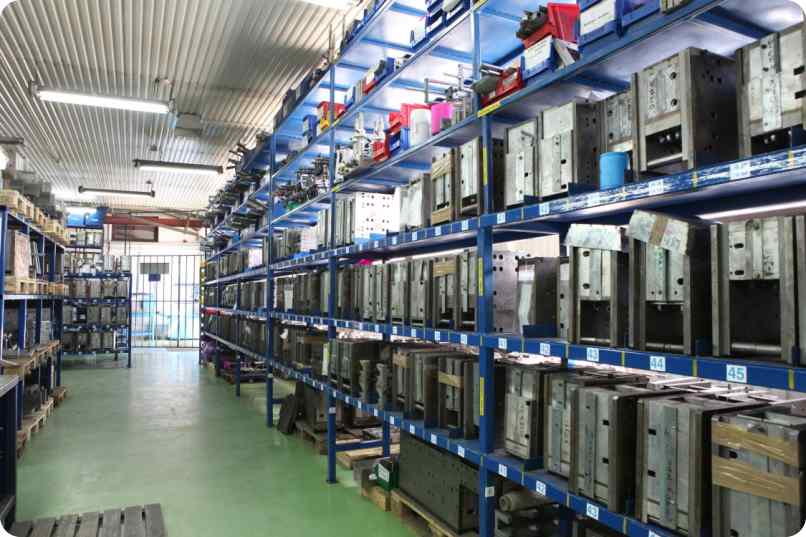
The following discussion outlines facilities and organization usually required for a complete self-contained shop formaking plastic molds. In setting up a captive shop other departments already established within the company may be drawn upon to perform several functions such as template shops, and plaster model shops. Often, self-contained units provide maximum efficiency, but this will be highly dependent on individual situations. Cost of facilities for plastic tool fabrication is lower than that for comparable metal tool fabrication. Of course, the size and type of plastic molds to be made have a direct bearing on the facilities required. The building requirements are determined by climatic conditions and the project contemplated. But, in addition to floor space, adequate ventilation, lighting and head room should be provided. Sanitary facilities must also be available to all personnel who come in contact with uncured plastic materials. Showers and private clothing lockers, together with supervised personal hygiene, are highly desirable. Like any other production department, a plastics injection molding company should be organized for most efficient work flow, materials availability, and centralization of similar types of operations. The latter permits personnel to become specialists in particular operations. In setting up the shop, small-scale production should be planned first, fabricating simple tools such as a holding fixture, contour checking fixture, simple vacuum forming mold, or small metal-forming die. With experience, such a shop can slowly grow into a complete shop to meet all your plastics tooling needs. The complete shop should generally have the following sections: template, patterns and molds, welding and metal fabrication, mold preparation, plastics casting, plastics laminating, tool finishing, tool proofing, and service facilities.
Template
In most cases, templates are the source of dimensional control for molds and mock-ups used in the manufacture of plastics tools. They are generally of flat sheet metal— steel, aluminum or brass— and vary from 0.020 to 0.125 in. in thickness. Facilities required to lay out and manufacture templates include lay out tables, square shears, metal cutting band saws, band filers, drill presses and miscellaneous bench equipment for sheet metal work. Usually such a shop would include
- the lay-out group: well-qualified “Class A” template makers who can read tool design and part drawings and carry out the calculations required to lay out accurate templates from engineer ing data supplied, and
- template filers: lesser experienced personnel who can be readily trained.
